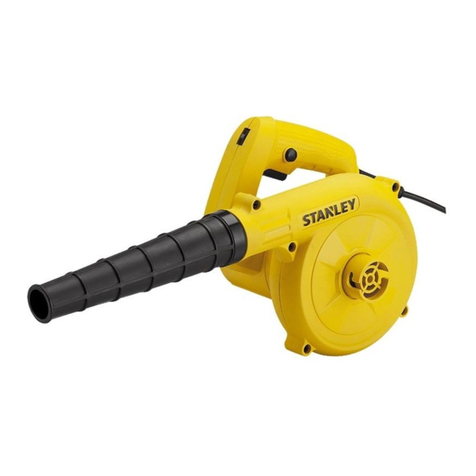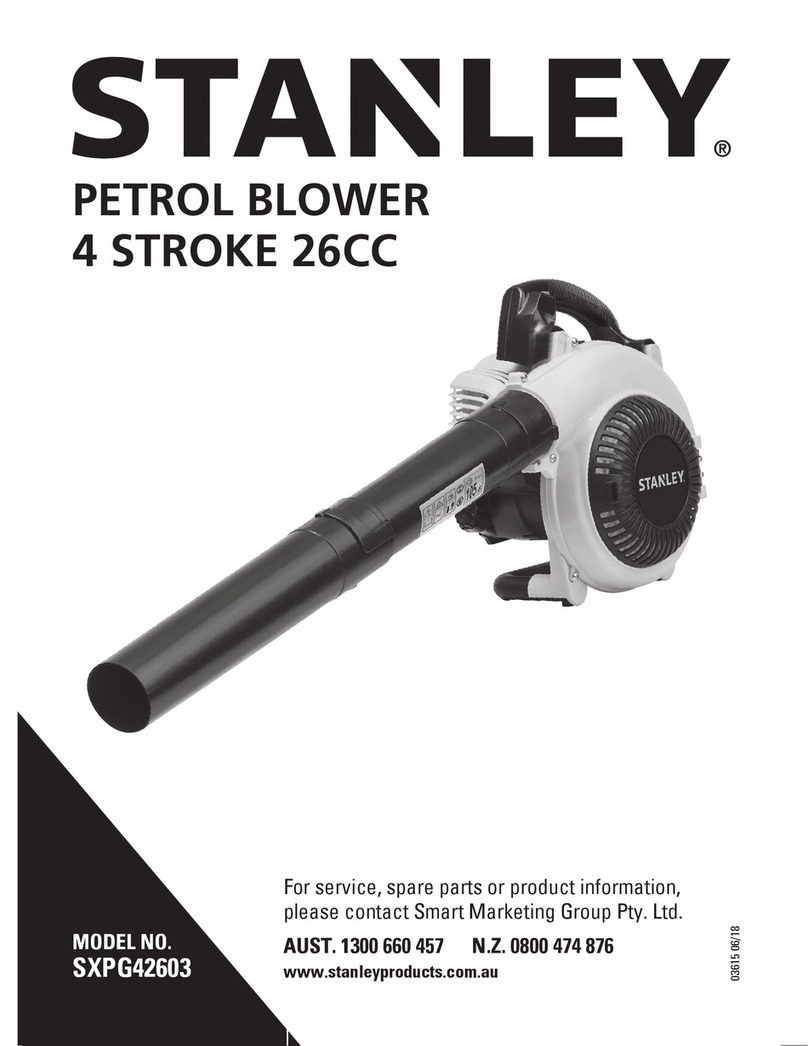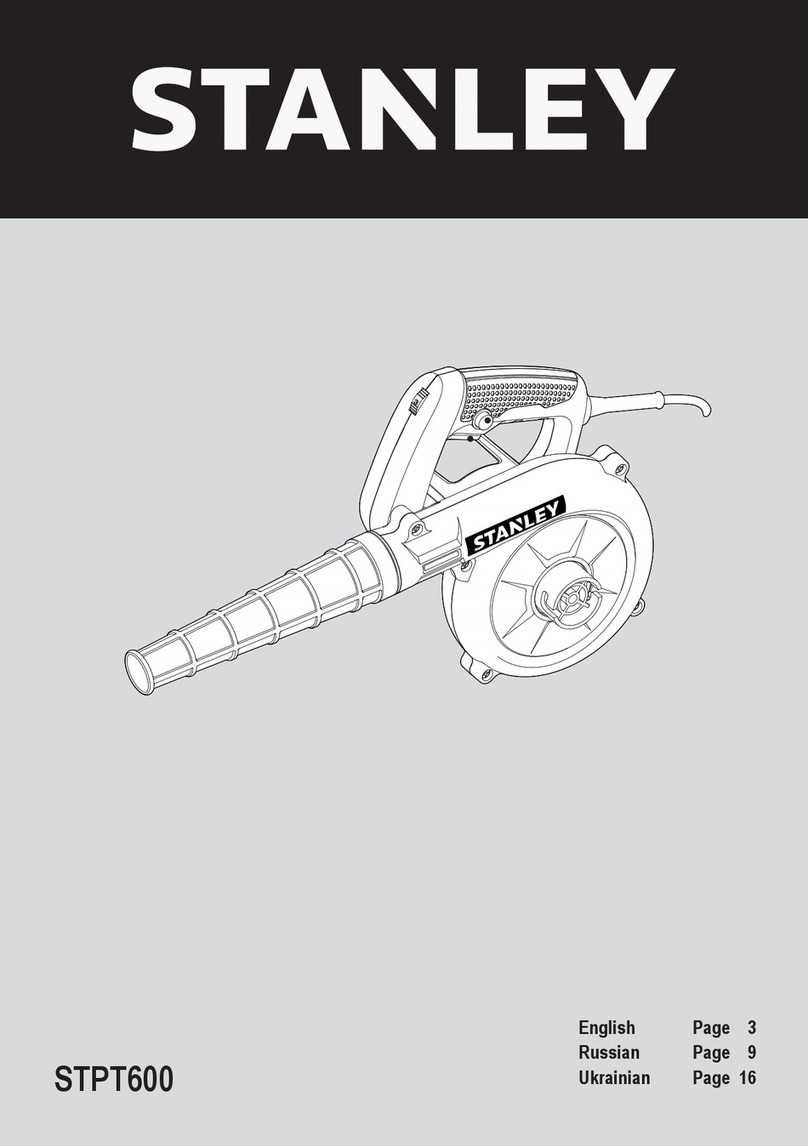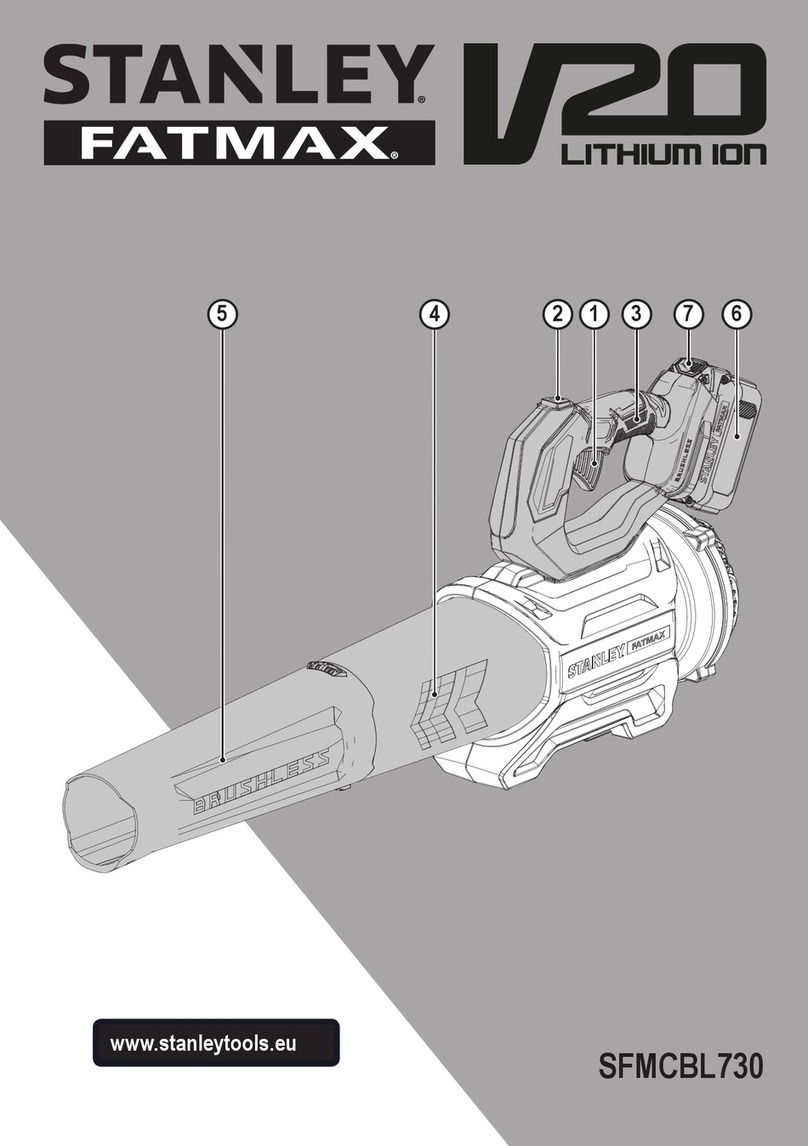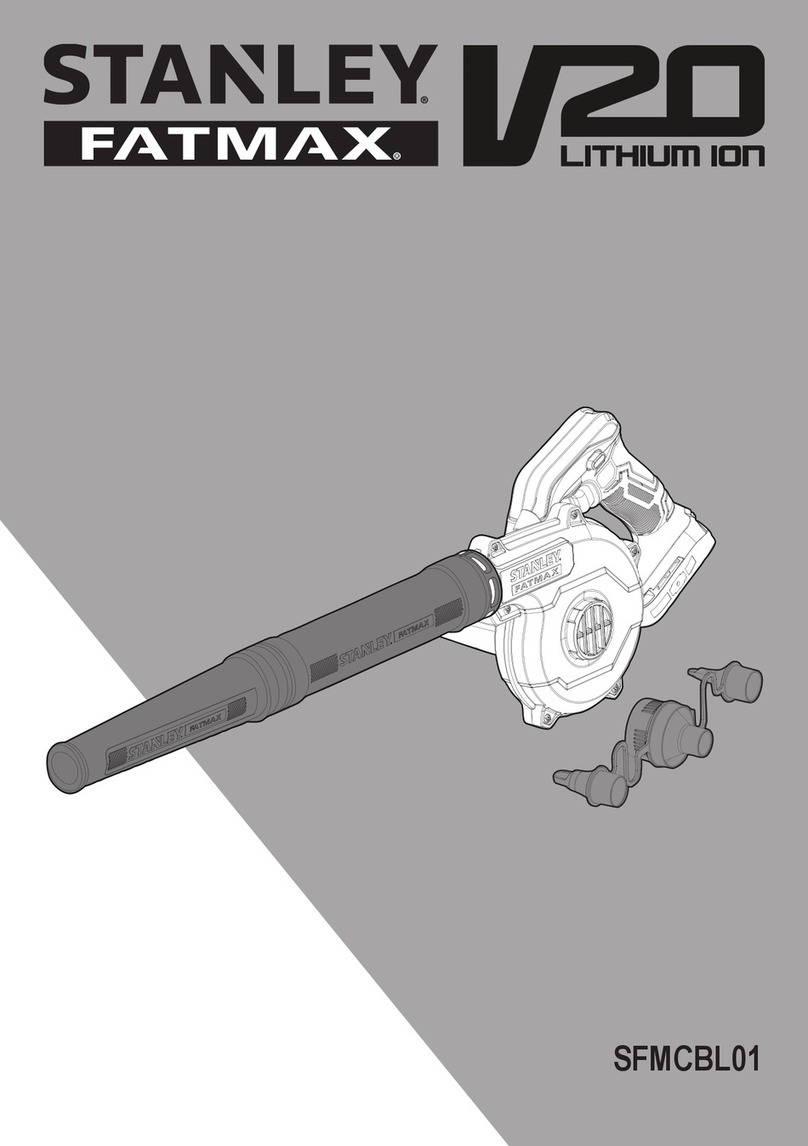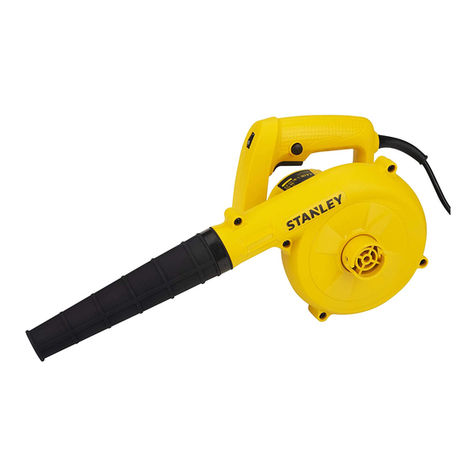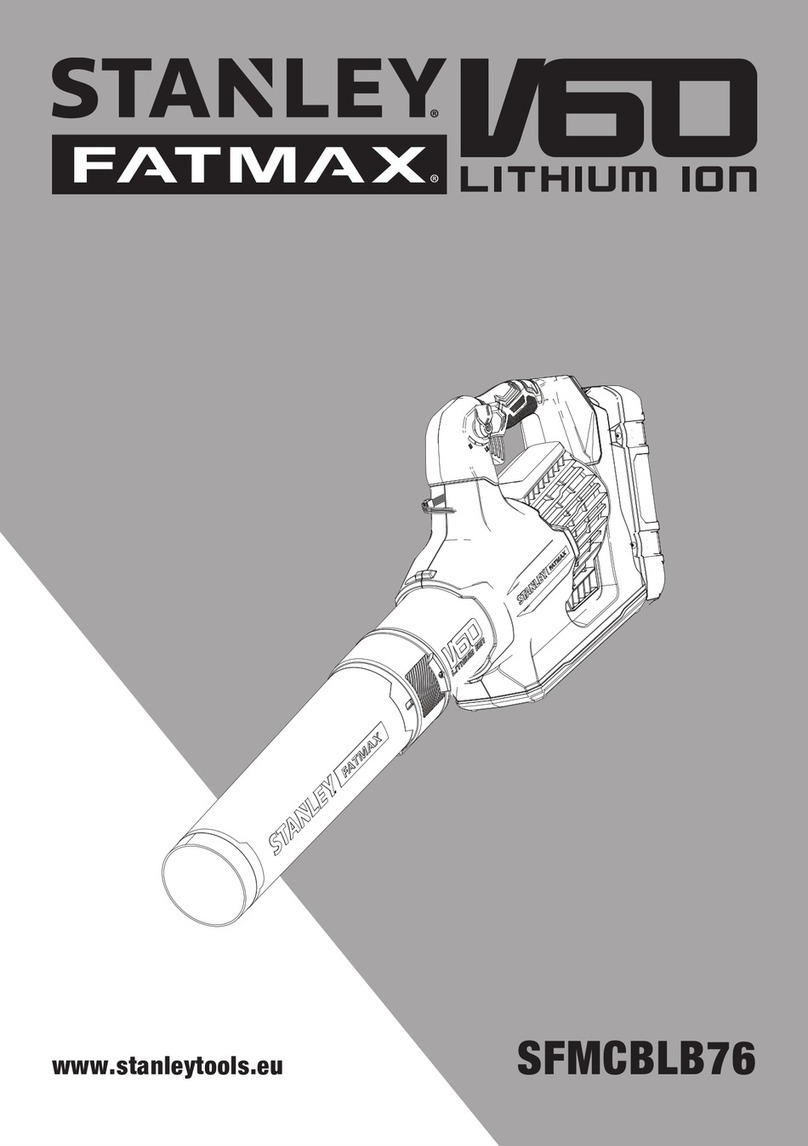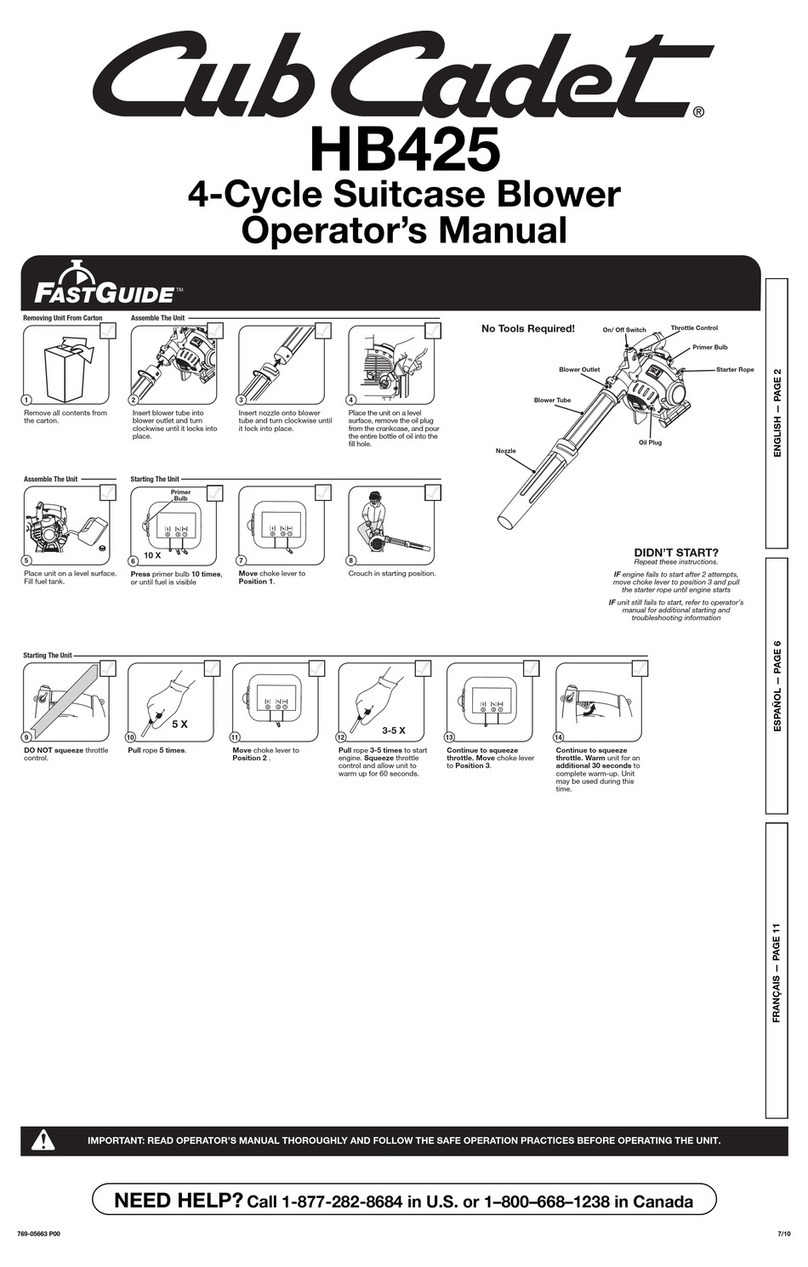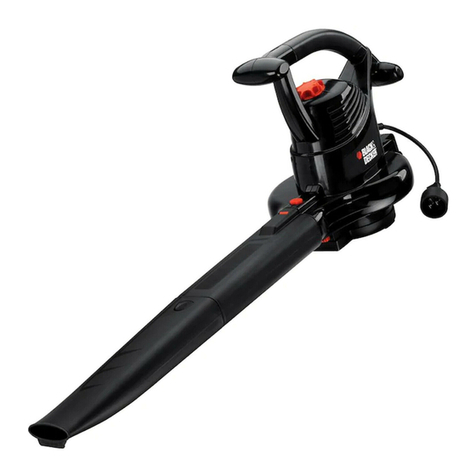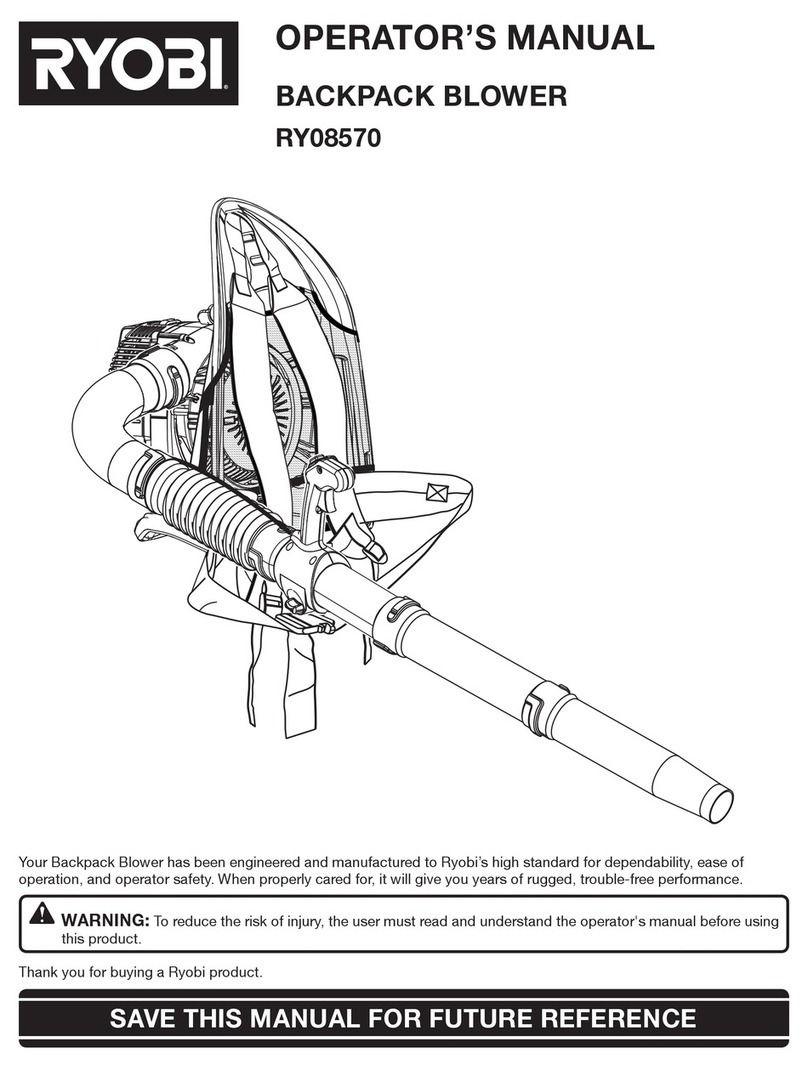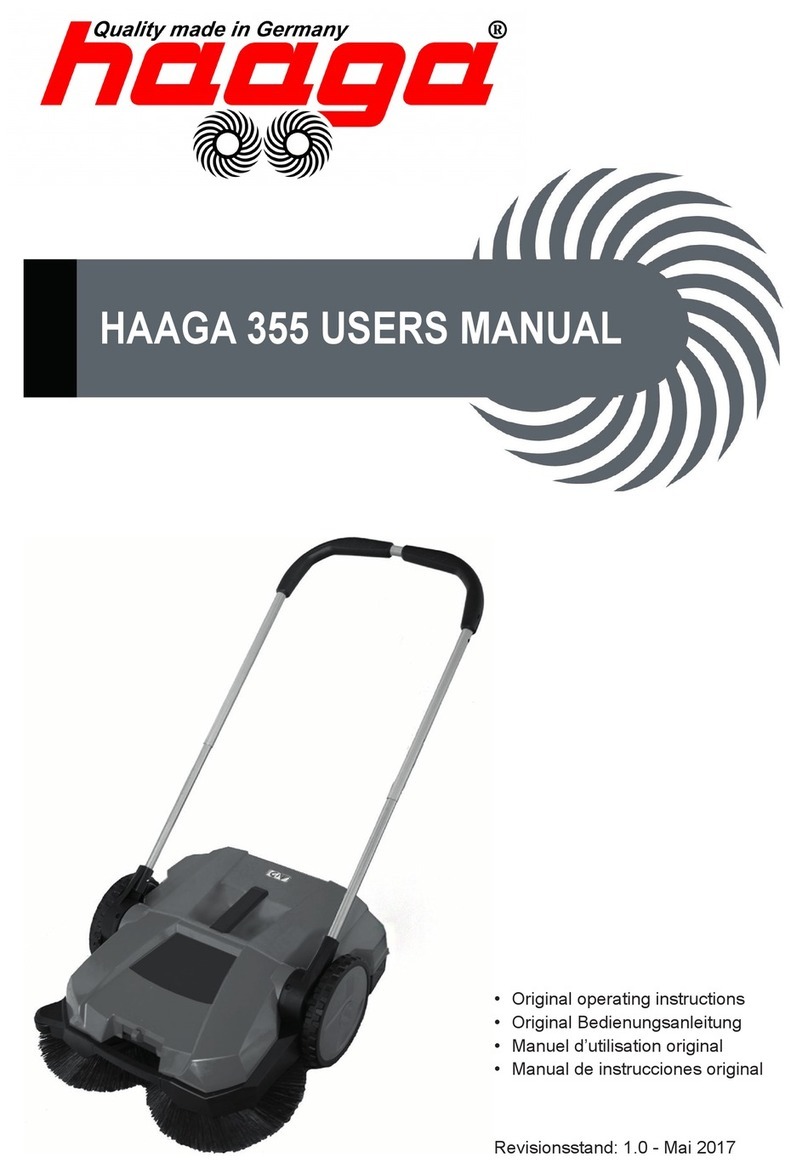
5
ENGLISH
• When operating an appliance outdoors, use an extension cord
suitable for outdoor use. Use of a cord suitable for outdoor use
reduces the risk of electricshock.
• If operating an appliance in a damp location is unavoidable,
use a Residual Current Device (RCD) protected supply. Use of an
RCD reduces the risk of electricshock.
After Use
• When not in use, the appliance should be stored in a dry, well
ventilated place out of the reach ofchildren.
• Children should not have access to storedappliances.
• When the appliance is stored or transported in a vehicle
it should be placed in the boot or restrained to prevent
movement following sudden changes in speed ordirection.
Battery tool use and care
• Recharge only with the charger specified by the manufacturer.
A charger that is suitable for one type of battery pack may
create a risk of fire when used with another batterypack.
• Use power tools only with specifically designated battery
packs. Use of any other battery packs may create a risk of
injury andfire.
• When battery pack is not in use, keep it away from other metal
objects, like paper clips, coins, keys, nails, screws or other small
metal objects, that can make a connection from one terminal
to another. Shorting the battery terminals together may cause
burns or afire.
• Under abusive conditions, liquid may be ejected from the
battery; avoid contact. If contact accidentally occurs, flush
with water. If liquid contacts eyes, additionally seek medical
help. Liquid ejected from the battery may cause irritation
orburns.
Service
• Have your appliance serviced by a qualified repair person
using only identical replacement parts. This will ensure that
the safety of the appliance ismaintained.
Additional Safety Instructions for Blowers
The intended use is described in this manual. The use of any
accessory or attachment or performance of any operation with
this appliance other than those recommended in this instruction
manual can present a risk of personal injury and/or damage
toproperty.
• To protect your feet and legs while operating the appliance,
always wear heavy duty footwear and longtrousers.
• Always switch off your product, allow the fan to stop and
remove the plug from the socket when:
ʵ The supply cable has become damaged orentangled.
ʵ You leave your productunattended.
ʵ Checking, adjusting, cleaning or working on yourproduct.
ʵ If the appliance starts to vibrateabnormally.
• Do not place the inlet or outlet of the sweeper near eyes or ears when
operating. Never blow debris in the direction ofbystanders.
• Do not use in the rain or leave outdoors while it israining.
• Do not cross gravel paths or roads whilst your product is
switched on during blow mode. Walk, neverrun.
• Do not place your unit down on gravel while it is switchedon.
• Always be sure of your footing, particularly on slopes. Do not
overreach and keep your balance at alltimes.
• Do not place any objects into the openings. Never use if the
openings are blocked - keep free of hair, lint, dust and anything
that may reduce theairflow.
WARNING: Always use your product in the manner outlined
in this manual. Your product is designed to be used in an
upright mode and if it is used in any other way it may result
in injury. Never run your product whilst lying on it’s side or
upsidedown.
• The operator or user is responsible for accidents or hazards
occurring to other people or theirproperty.
• Do not carry the appliance by thecable.
• Always direct the cable to the rear away from theappliance.
WARNING: If a cord becomes damaged during use,
disconnect the supply cord from the mains supply
immediately. Do not touch the supply cord before
disconnecting thesupply.
• Do not use solvents or cleaning fluids to clean your product.
Use a blunt scraper to remove grass anddirt.
• Replacement fans are available from a STANLEYFATMAX service
agent. Use on STANLEYFATMAX recommended spare parts
andaccessories.
• Keep all nuts bolts and screws tight to make sure that the
appliance is in a safe workingcondition.
Safety of Others
The appliance is only to be used with the power supply unit
provided with the appliance
• This appliance is not intended for use by persons (including
children) with reduced physical, sensory or mental capabilities,
or lack of experience and knowledge, unless they have been
given supervision or instruction concerning use of the appliance
by a person responsible for theirsafety.
• Children should be supervised to ensure that they do not play
with theappliance.
Residual Risks
Additional residual risks may arise when using the tool which
may not be included in the enclosed safety warnings. These risks
can arise from misuse, prolonged useetc.
Even with the application of the relevant safety regulations and
the implementation of safety devices, certain residual risks can
not be avoided. These include:
• Injuries caused by touching any rotating/movingparts.
• Injuries caused when changing any parts, blades
oraccessories.
• Injuries caused by prolonged use of a tool. When using any
tool for prolonged periods ensure you take regularbreaks.
• Impairment ofhearing.

